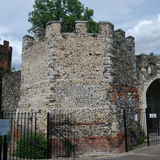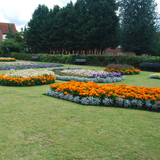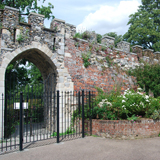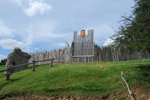History
The Normans built Hertford Castle as a motte and bailey-style castle on the site of a Saxon fortification. The Tudors rebuilt it in the 15th century into a royal fortress and residence.
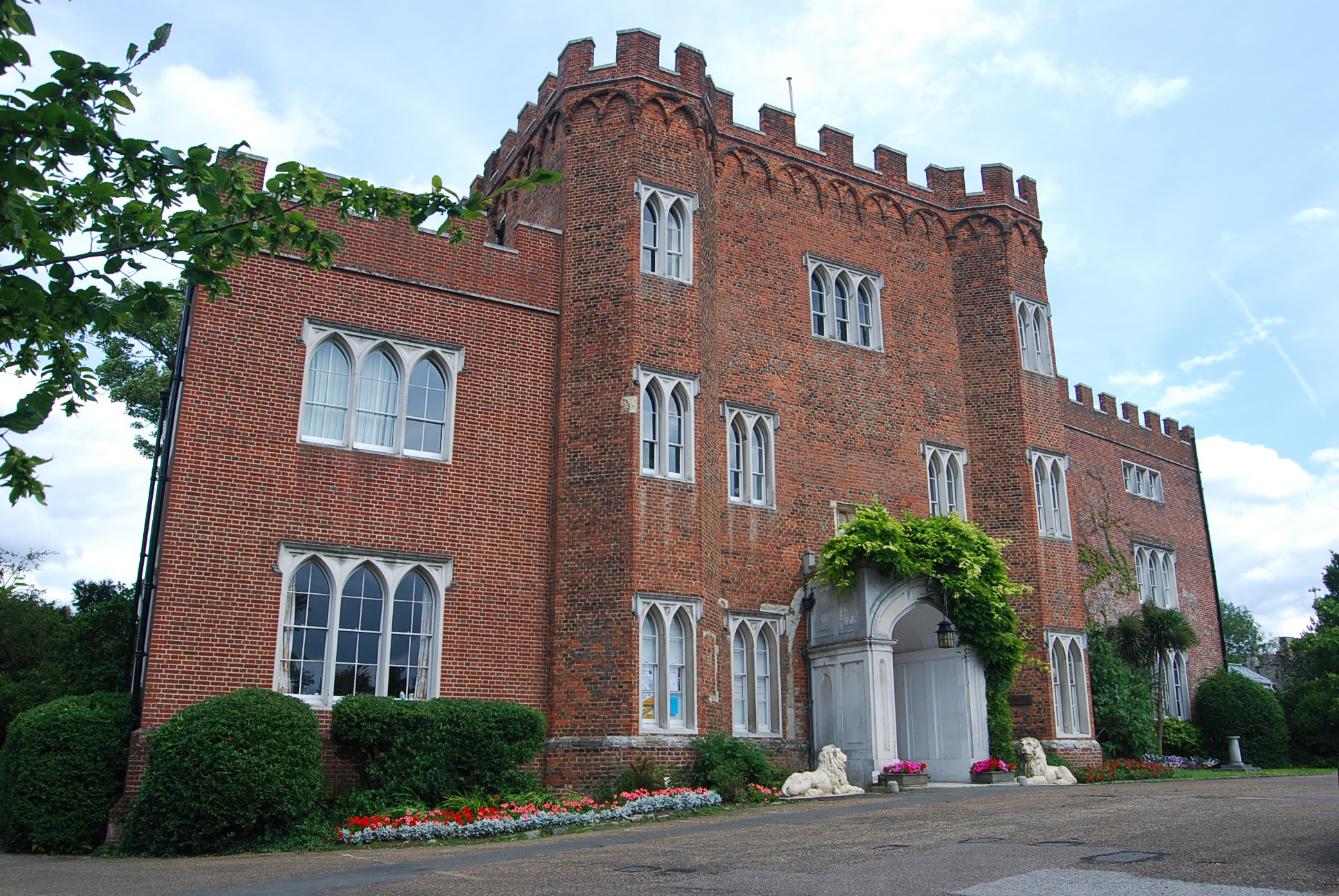
In 912, King Edward the Elder, son of Alfred the Great, built a Saxon earthwork and timber castle on the River Lea to defend the fortified town of Hertford from the Danes. Soon after the Battle of Hastings in 1066, the Normans built a Motte and Bailey Castle on the site of the Saxon fortification. William the Conqueror granted Hertford Castle to Peter de Valognes, the High Sheriff of Essex and Hertfordshire. The earthen mound, known as "The Motte," is the oldest surviving part of this castle today. The motte and the bailey were enclosed by moats fed from the river.
Between 1170 and 1174, Henry II enlarged and strengthened the castle by adding stone flint walls, drawbridges, gatehouses, and a great hall as part of a series of improvements to defend London, including strengthening the castles at Berkhamsted and Windsor. The existing stone wall dates from this period. The great hall survived until the 17th century.
In 1184, Robert de Valognes died, leaving no male heir to inherit the castle. His son-in-law, Robert FitzWalter, claimed it, seized it, and installed a garrison. Although King John evicted FitzWalter, he was eventually appointed castle governor.
In 1215, Robert FitzWalter and a rebel army of barons offered the English throne to the French Prince, Louis the Dauphin, during the First Barons' War to replace King John. The French besieged Hertford Castle in 1216, and after 25 days, Walter de Godarvil surrendered the castle to them. But by 1217, England had united under Henry III, the French left, and the castle returned to the English crown.
In 1299, King Edward I gave Hertford Castle to his second wife, Margaret, and the castle began life as a royal residence.
In 1309, during the reign of Edward II, Hertford Castle saw its first political prisoners when some Knights Templar were held there. Edward's wife, Queen Isabella of France, and their son Edward III spent considerable time at the castle. Isabella died in the castle in 1358. During the Hundred Years' War, Hertford Castle held prisoners of royal and noble rank, including King David of Scotland and, in 1359, King John of France. John spent 3850 pounds in four months imprisoned in the castle.
In 1360, Edward III granted Hertford Castle to his fourth son, John of Gaunt. John used the castle as his primary country home when not on campaigns. He repaired and strengthened the defenses. In 1362, Joan of the Tower, youngest daughter of Edward II and Queen Isabella, and sister of Edward III, died at Hertford Castle at age 41.
When John of Gaunt died in 1399, King Richard II seized all the Lancastrian estates from John's son, the Duke of Lancaster, including Hertford Castle. Later that year, Richard was deposed, and Henry IV became King and regained ownership of the castle.
In 1418, Henry V granted the castle to his new wife, Princess Katherine of France, and they spent much time there together. Their son, Henry VI, spent much of his infancy at the castle. In 1445, Henry VI married Margaret of Anjou and granted her the castle.
During the Wars of the Roses, Edward IV, who had the crown, granted Hertford Castle to his wife, Elizabeth Woodville. In 1463, a gatehouse was built for Edward IV. Later, when Richard III gained the throne, he granted the castle to one of his supporters, Humphrey Stafford, 1st Duke of Buckingham.
In 1486, Henry VII married Elizabeth of York and conferred the castle to her the following year. His son, Henry VIII, spent vast sums of money turning the castle into a palace. It was at this time that the Gatehouse we see today was built. Henry VIII's daughter, Queen Elizabeth I, spent much of her childhood in a governess's care at Hertford Castle. Edward VI granted the castle to Princess Mary, and during her reign, she used it to imprison Protestant martyrs.
Due to the plague in London, the Palace buildings at Hertford Castle housed Parliament, law courts, and the Privy Council between 1564 and 1592.
During King James I's reign, the castle ceased to be a royal residence and started to decay. By 1608, the Palace buildings had been demolished, and the Gatehouse became a private house.
When James died and his son became King Charles I, he granted Hertford Castle to William Cecil, 2nd Earl of Salisbury. By now, the castle was in ruins. Cecil leased the castle to Sir William Harrington, who restored some buildings. Around 1790, the South Wing was added to the Gatehouse, the windows were all remodeled, and the parapet and brick crenellations were added to the roof.
In 1911, Hertford Corporation leased the castle from the Marquess of Salisbury to house its administration. The grounds became a public garden. In the 1930s, the North Wing was added to the Gatehouse, and in the late 20th century, Lord Salisbury gave the castle to the town.
Castle Highlights
The Gatehouse of Hertford Castle is all that remains apart from the Postern Tower, Postern Gate, and some of the rampart walls. The Gatehouse is used as a council office and to host private events like weddings, but it is generally closed to the public.
The castle grounds serve as a public park or garden and are free to visit. The River Lea flows beside the grounds and the Gatehouse, providing refuge for ducks and swans.
Hertford Castle grounds can be explored in an hour or two, including the time it takes to get from parking in town to the castle, as no parking is close to it. Mountfitchet Castle is close enough to visit the same day and provides a chance to see a wooden motte and bailey castle as it would have looked in 1066.
